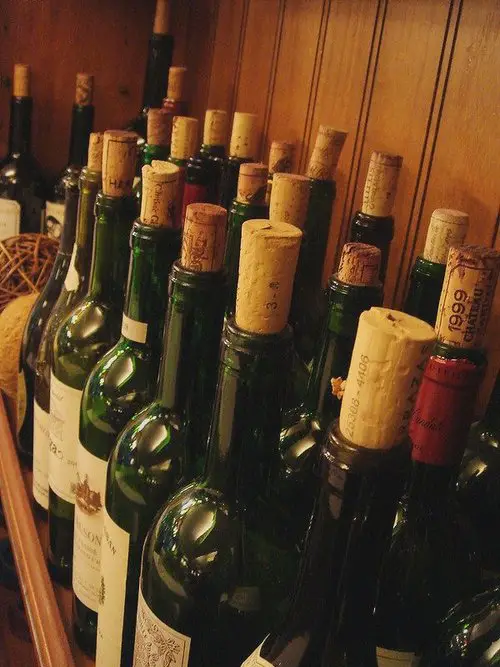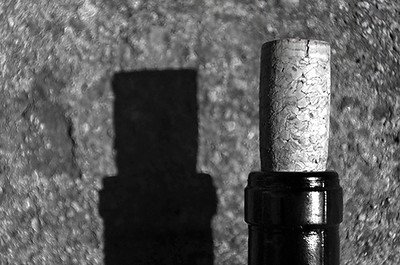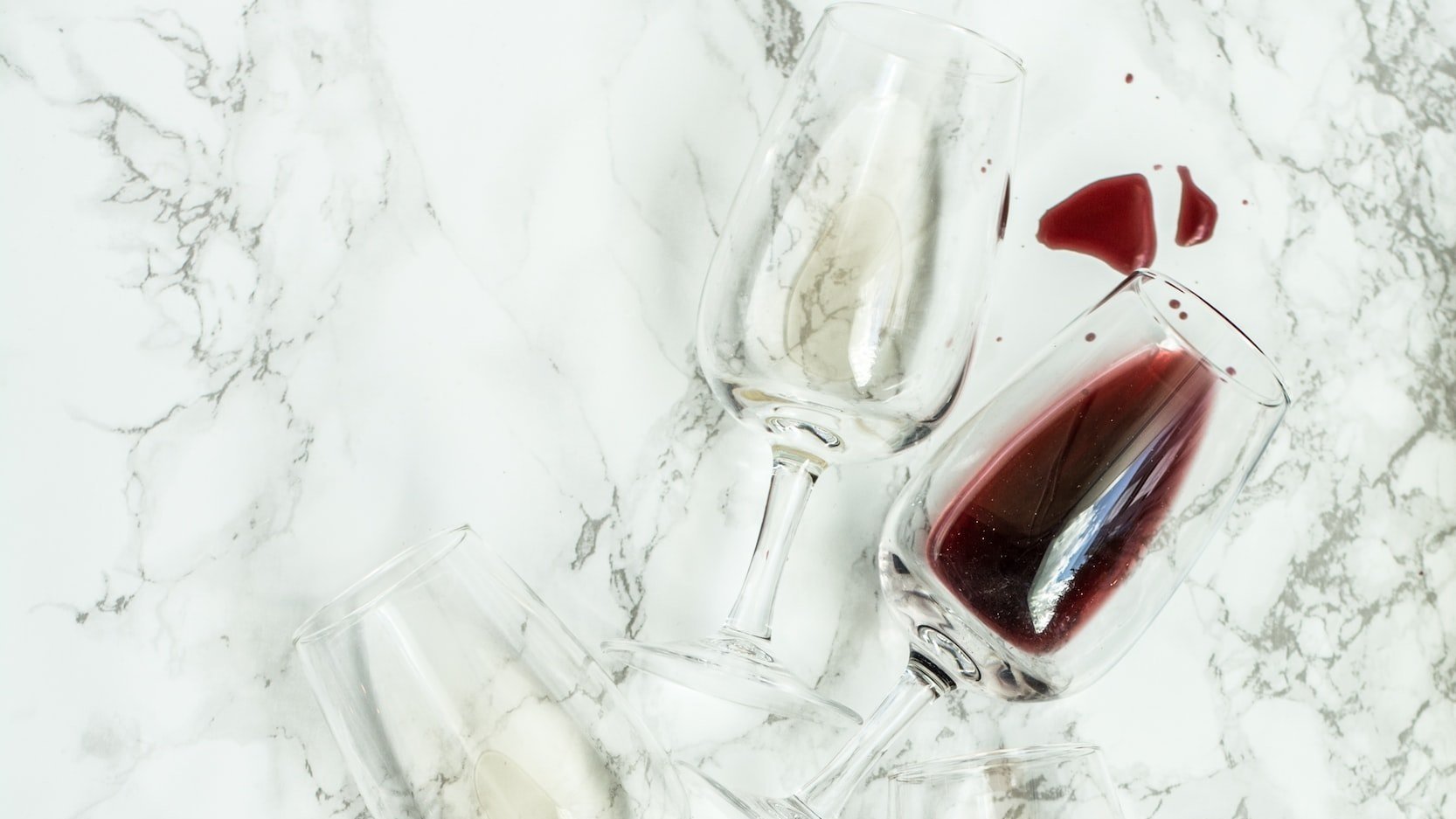
I drink wine. A lot of wine. I’m also a solo drinker, so unless I’m hosting, I have leftover wine pretty much all of the time. Here’s what you need to know about keeping open wine bottles fresh.
Put open wine in the fridge if you want it to stay fresh for as long as possible. Wine goes bad when it’s exposed to oxygen or bacteria. Leftover wine is good for 3-5 days after opening without any special preservation systems. Oxygen exposure causes the wine to oxidize and lose freshness. Bacteria will cause the wine to develop vinegary notes from acetic acid. You can slow both of these chemical processes down by keeping your open wine cold because colder temperatures slow down chemical reactions.
How long is leftover wine good for? Here’s how to make it last…
How Long Does an Open Bottle of Wine Last?
Here’s an overview of how long different wines will last (on average) when stored in the refrigerator immediately after opening. Acid, alcohol, and tannin help act as preservatives. Wines high in any/all of these three key structural components last longer after being opened.
Wine Storage Guidelines
Light White Wines
| Survival | 5-6 days |
|---|---|
| Examples | Pinot Grigio, Albariño, Riesling, Sauvignon Blanc, Hunter Valley Semillon, Picpoul |
Rosé Wines
| Survival | 4-6 days |
|---|
Full-bodied White Wines
| Survival | 3-5 days |
|---|---|
| Examples | Chardonnay, Viognier, Muscat |
Sparkling Wines
| Survival | 1-3 days (up to 3 days for higher-quality traditional method Champagne or Cava) |
|---|---|
| Caveat | Enjoy flat sparkling wine like a light-bodied white for up to 7 days |
Light Red Wines
| Survival | 2-3 days |
|---|---|
| Examples | Pinot Noir, Gamay, Mencia |
Medium Red Wines
| Survival | 3-5 days |
|---|---|
| Examples | Malbec, Merlot, Cabernet Franc |
Full-bodied Red Wines
| Survival | 4-6 days |
|---|---|
| Examples | Cabernet Sauvignon, Shiraz, Zinfandel |
Fortified Wines
| Survival | Up to 30 days |
|---|---|
| Examples | Sherry, Port, Marsala, VDNs |
| Madeira | Indestructible |
Old Wines
| Survival | Drink immediately; do not store overnight |
|---|
Here’s a quick rundown of different lifespans for open wine bottles.
- Light white wines: Thanks to higher acid, light white wines can survive longer than some other wine styles. Pinot Grigio, Albariño, Riesling, Sauvignon Blanc, Hunter Valley Semillon, and Picpoul can last 5-7 days if you keep them corked or stoppered in the fridge. The longer you keep the wine, the more likely you’ll notice that it loses some of its aromatic and fruity qualities.
- Rosé wines: Similar to light white wines, rosé wines benefit from higher acid that acts as a preservative. Keep rosés in the fridge for up to 4-6 days.
- Full-bodied white wine: Full-bodied white wines like Chardonnay, Viognier, and Muscat will last 3-5 days in the fridge. They don’t have the same acid level to help protect them like their lighter-bodied counterparts.
- Sparkling wine: Sparkling wines have naturally high acid and will stay fresh for 1-3 days in the fridge with the bubbles. If you have a higher-quality traditional method Champagne or Cava, the bubbles can last up to 3 days. If you have a Prosecco made in a tank or carbonated wine, maybe an inexpensive Sekt, then expect the wine to go flat within about 24 hours after opening, just like a can of soda pop.
Caveat: Sparkling wine has very high acid giving the effervescence a fresh quality. You can still enjoy your sparkling wine, even if it’s flat, just light a light-bodied white wine for up to 7 days. Here’s how to store leftover sparkling wine.
- Light red wine: Light bodied red wines like Pinot Noir, Gamay, and Mencia will last 2-3 days in the fridge if you keep the corked or stoppered. They don’t have high tannin levels that help protect them from oxidation.
- Medium red wine: Enjoy medium bodied red wines like Malbec, Merlot, and Cabernet Franc for up to 3-5 days after opening. These wines have more alcohol and tannin to help protect them.
- Full-bodied red wine: Big red wines like Cabernet Sauvignon, Shiraz, and Zinfandel can last 4-6 days in the fridge. They have structure, acid, alcohol, and tannin to help them survive a little longer
- Fortified wine: Fortified wines come in different styles, but their unifying element is screaming high alcohol content that keeps them stable. Like acid and tannin, alcohol’s a natural preservative and fortified wines have lots of alcohol. Keep Sherry, Port, Marsala, and VDNs in the fridge for up to 30 days. You will notice that the flavor intensity diminishes with time on these wines. Madeira’s indestructible thanks to the way it’s made. It won’t improve in the bottle, but it’s not going to get any worse.
- Old wine: If you have a special bottle of aged wine, be it 15, 20, or 30+ years old, drink it, don’t try to store it in the fridge or on the counter overnight. The acid and tannin slowly fade over time and these are the two components that you need to keep your wine fresh. Added to that, the flavor intensity in old wine can quickly blow off as soon as it’s exposed to oxygen. Drink up if you’re opening an old bottle of wine!
Tasting Tip: Check out this helpful post on what old wine smells like.
What Makes a Wine Last Longer Once Open?

A wine’s resilience to oxygen exposure depends on a few key structural qualities: acid, alcohol, and tannin.
Higher acid white wines, like Picpoul, Hunter Valley Semillon, and Sauvignon Blanc will be more resilient because acid acts as a preservative.
Full-bodied, high-acid reds with high tannin levels, like Portugal’s Baga or a tannic Nebbiolo will fare better for the same reason. Tannin acts as a natural preservative.
How to Keep Your Wine as Fresh as Possible for as Long as Possible
Vacu Vin Wine Saver Pump with Vacuum Bottle Stoppers (Black)Buy on Amazon
- Keep the Bottle Sealed. Oxygen is the enemy of wine. If you know that you’re not going to finish an entire bottle in one sitting, pour yourself a glass and then immediately replace the cork or screw cap. Do this every time you pour yourself wine. It’s a great habit worth developing.
- Keep the Open Bottles in the Fridge. The best place for your open wine bottle is in the fridge. If you don’t have access to a fridge, then put the bottle in a temperature-controlled area like a basement or cool cupboard. Avoid storing the wine in a place that has wildly different temperatures throughout the day (like the kitchen counter).
- Avoid Light Exposure. Direct light exposure is a no-no. Don’t put your half bottle of wine near the window. Sun exposure will speed up those chemical reactions and your wine will oxidize faster.
- Decant Leftovers into a Smaller Bottle. The next time you get a half-bottle of wine (375ml) hang on to the empty bottle. These smaller bottles come in handy if you regularly have leftover wine. Pouring your unfinished wine into a smaller bottle and re-corking it will reduce the wine’s overall surface area and therefore reduce the wine’s oxygen exposure. Pop the cork back in the top of the bottle and put that baby in your fridge for later.
- Use a Vacu Vin. This little gadget creates a vacuum seal on your open bottle. I’ve used one for the past 20 years (the same one). It extends the life of a bottle of wine by at least 2 days.

Coravin
- Use a Coravin. I use a Coravin at least weekly for nicer bottles of wine that I only want to enjoy one glass at a time. A Coravin will keep your wine bottle fresh for about 6 months before you start to notice a quality change. This is perfect for someone who can’t go through a bottle of wine in a few days, but loves drinking higher quality wines.
How Do Know If Your Wine Has Spoiled? 3 Signs
Here are 3 telltale signs that your wine is bad:
- Smell. Newly opened wines have strong aroma profiles that leap out of the glass. These aroma compounds, called esters and thiols, fade when exposed to oxygen. Over the course of several days, they power of your wine’s aroma will diminish until it’s really hard to smell anything at all, even when you swirl the wine vigorously.
- Taste. Wine that’s been open for too long will begin to taste like vinegar. Take a small sip. Let your tastebuds be your guide. Some people like the balsamic quality of slightly off wine, but others are sensitive to the taste.
- Color. White wines exposed to oxygen become dull and develop a brown tinge to them. Red wines exposed to oxygen likewise move from ruby to garnet to brown. This may not be obvious, especially if you spend more time guzzling your wine than gazing at the nuances of its color qualities.
Even if you do everything possible to keep your leftover wine from going bad, time marches on and your wine will eventually go bad.
Why Does Wine Go Bad?
Your wine’s protected from Mother Nature as long as the bottle’s sealed under a cork or screwcap.
But as soon as you open your bottle of wine, it’s exposed to oxygen.
Oxygen allows naturally occurring bacteria to go to work turning your zesty wine into vinegar. This is a natural chemical reaction resulting in acetic acid (vinegar).
Oxygen exposure will oxidize your wine and diminish its vibrancy (just like leaving a cut apple on a plate), and turn the wine from a bright, clear yellow or ruby, into a dusty straw or brick color.
Over the course of a few days, oxygen exposure will dampen the wine’s fruity aromatics and what was originally a lively glass of Pinot Grigio or Merlot, will seem muted and uninspired.
Will Drinking Bad Wine Hurt You?

Drinking bad wine or drinking spoiled wine is perfectly safe. It won’t taste great, but you’ll be fine if you’re determined to drink every last drop.
One of the most fascinating qualities about wine is its ability to not kill you (well, maybe if you drink too much of it), even if it is absolutely terrible.
This is probably one of the reasons that wine’s been man’s stalwart beverage of choice for the past 10,000 years.
Thirsty for More?
Check out this fun post that explores fruity, light red wines, perfect if you enjoy Pinot Noir.
And here’s a slightly nerdy post that explores how a bottle of wine gets priced.





